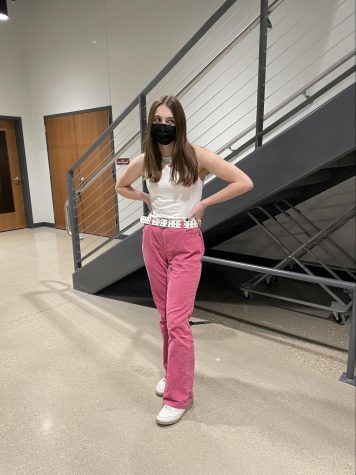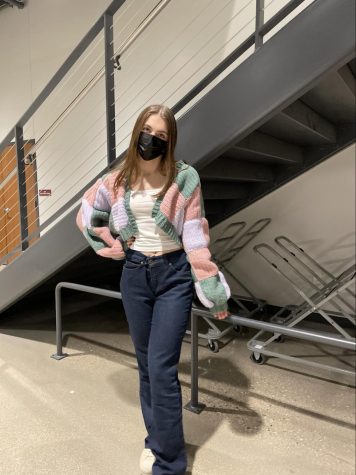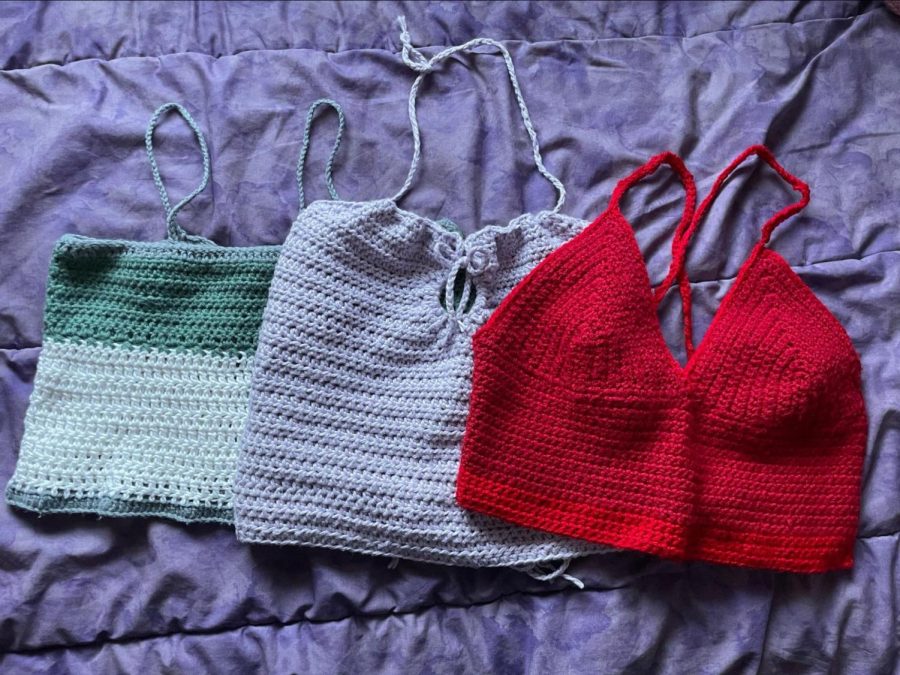The Ethics of Fast Fashion and How to Dress Sustainably
Creating your own clothes and shopping from sustainable brands are great ways to do your part and help slow the unethical and environmentally damaging fast fashion industry.
March 20, 2022
Fast production, fast consumption, and fast wear. The fast fashion industry sets low prices to create high demand. Their products are made at fast-paced rates, and new clothes that follow the latest trends are constantly being added to their stores.
Though it sounds appealing, fast fashion items are cheaply made and encourage people to follow microtrends, which results in clothing being discarded after only being worn a few times. According to EthicalConsumer, a British nonprofit publisher focused on ethical consumption and fair trade, the average item of clothing in the UK is worn just 14 times before it is gotten rid of.
In order to keep costs low, fast fashion companies use cheap synthetic fabrics that contain plastics. This causes a heavy environmental impact. Polyester is one of the most common synthetic fabrics. It is made of a type of plastic called polyethylene terephthalate.
When clothing is washed, small microfibers are released and go down the drain and into our water system, often ending up in the ocean. Synthetic fabrics release plastic microfibers, and half a million tons are released into the ocean every year, the same as more than 50 billion plastic bottles.
The fast fashion industry is also responsible for up to a tenth of global carbon emissions, and it is expected to increase by 50% by 2030.
Not only is fast fashion costly to the environment, but there are some questionable ethics surrounding factories and factory workers. Approximately 160 million children around the world are forced into child labor. Many work in places such as garment factories, which often have terrible conditions for workers.
Many tragedies result from the unethical treatment of factory workers. One event like this occured on April 24, 2013 at Rana Plaza in Bangladesh. Large structural cracks had been found in the factory building the previous day, and workers on lower floors were given the day off. However, garment workers on the upper levels were ordered to come into work. This led to the devastating collapse of the building, which killed 1,134 people and injured thousands more. The event gained global attention and shed light on the treatment of garment factory workers, but conditions in garment factories are still unsafe today.
So how can we avoid fast fashion? Here are some ways you can start dressing sustainably.
Avoid Fast Fashion Brands
While shopping, especially online, it is important to know where your clothes are from and how they are made. If you want to avoid fast fashion, avoid brands like Shein, Forever 21, Pretty Little Thing, Boohoo, and Zara. One great place to check if a brand falls under the fast fashion umbrella is Good On You, a website and app that rates brands from “We avoid” to “Great” based on ethical and sustainability standards.
Some great sustainable brands include Levi’s and Girlfriend Collective. Another example of a sustainable fashion company is Patagonia, which uses eco-friendly materials.
Stay Away From Microtrends
There are constantly trends in fashion within our society, but in recent years the app TikTok has inspired a fast paced version of them: Microtrends. A new clothing item or style becomes super popular on the app, and everyone loves it until a week later when people decide they “never liked it” and move on to the next thing. This constant and quick change from one trend to the next defines microtrends, which fuel the fast fashion industry.
One thing to do when shopping is ask yourself, “Would I still wear this a year from now? Two years from now?” You can also prevent buying clothes you wear once before they are no longer trendy by purchasing basics, such

as neutral colored clothing you can style many different ways.
Shop Small Businesses and Thrift/Consignment Stores
One alternative to buying clothes from non-sustainable places is buying from small businesses near you. Buying from these businesses allows you to know the quality of their clothes as well as where they are made, and you are also able to support the community.
Another option is shopping at thrift, consignment, and vintage stores. Local thrift shops and chains such as Goodwill sell used clothes for lower prices. In turn, you can donate clothes or other items that you no longer wear or need. This alternative to shopping is cheaper, and is much healthier for the environment. One thing to be conscious of while thrifting is that there are people who depend on used clothing stores to buy most of their things, so it is important to be mindful of what you buy.

Making Your Own Clothes
You can also be sustainable by creating your own clothes. There are many different ways to do this, including sewing, knitting, and crocheting. While supplies can sometimes be costly, being able to make your own clothes is a handy and fun skill to pass time. It also ensures that you know the effect your clothes have on the environment, as well as the ability to purchase ethically-sourced materials.














